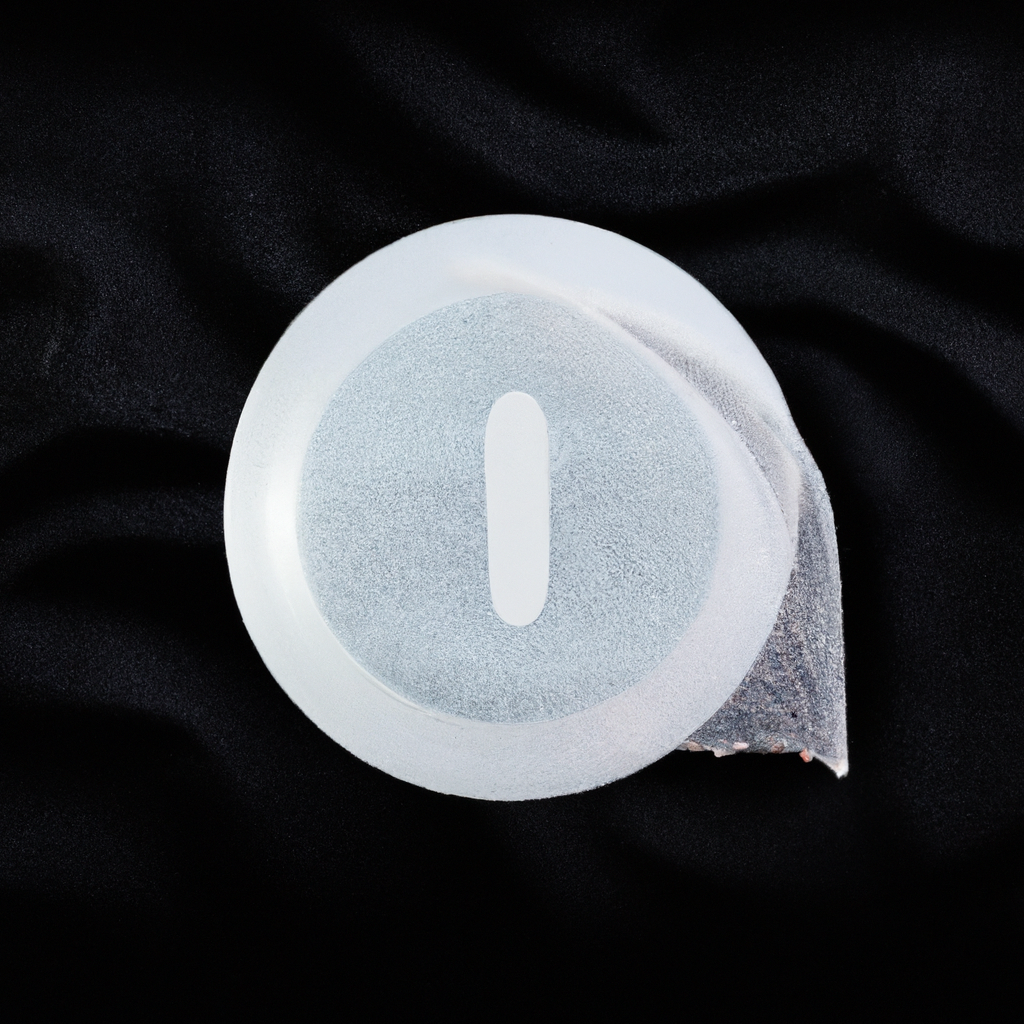Are you intrigued by the idea of fashion that does more than just look good? E-textiles, a revolutionary combination of technology and clothing, are here to fulfil your dreams. These innovative fabrics seamlessly integrate electronic components, such as sensors and light-emitting diodes (LEDs), into textiles, making it possible to add new functionalities to clothing. Whether it’s a dress that lights up with each step or a shirt that monitors your heart rate, e-textiles are revolutionizing the way we think about fashion and its potential for enhancing our everyday lives. Get ready to explore the exciting world of e-textiles, where style meets innovation!
The Rise of E-textiles
The Intersection of Fashion and Technology
E-textiles, also known as smart textiles or electronic textiles, have emerged as an exciting and innovative new trend in the fashion industry. Combining the realms of fashion and technology, these textiles are revolutionizing the way we think about clothing and accessories. By seamlessly integrating electronics and fabric, e-textiles are turning our everyday clothing into interactive, functional, and stylish pieces.
Advances in E-textile Technology
Over the years, significant advancements have been made in e-textile technology, paving the way for their integration into the fashion industry. Conductive yarns and threads have been developed, which allow for the flow of electricity through the fabric. Flexible circuitry has also been introduced, enabling the electronic components to be incorporated into the fabric without compromising its flexibility. Furthermore, the development of microcontrollers and sensors has made it possible to gather data and interact with the garments. These technological breakthroughs have opened up endless possibilities for the application of e-textiles in fashion.
Applications of E-textiles in Fashion
Smart Clothing
One of the most notable applications of e-textiles in fashion is the creation of smart clothing. These garments are embedded with sensors and microcontrollers that can monitor vital signs, track movement, and even analyze sweat composition. Imagine a shirt that measures your heart rate during a workout or a dress that changes colors based on your mood. With smart clothing, functionality and style go hand in hand, enhancing the overall user experience.
Wearable Accessories
Apart from clothing, e-textiles have also found their way into wearable accessories. Bracelets, hats, belts, and even shoes can now be equipped with electronic capabilities. These accessories can monitor your posture, provide haptic feedback, or even charge your devices on the go. The integration of e-textiles into accessories adds an extra layer of functionality and personalization to your everyday style.
Fashion and Wellness
E-textiles have not only transformed the fashion industry but also the wellness sector. With the ability to monitor biometric data, garments infused with e-textile technology can assist in health and wellness monitoring. These textiles can track your sleep patterns, monitor hydration levels, and even detect potential health issues. By seamlessly integrating technology into fashion, e-textiles are making a positive impact on personal well-being.

Challenges and Innovations in E-textile Design
Integration of Electronics and Fabric
One of the main challenges in e-textile design is the seamless integration of electronics and fabric. Electronics tend to be rigid and bulky, while fabrics need to be flexible and comfortable. Engineers and designers are constantly exploring innovative solutions to merge the two worlds harmoniously. Flexible circuitry and conductive yarns have been essential breakthroughs in overcoming this challenge, allowing for greater flexibility and comfort without sacrificing functionality.
Flexibility and Durability
Another primary concern in e-textile design is ensuring the garments are both flexible and durable. Clothing and accessories go through constant movement and wear, and e-textiles need to withstand this without compromising their functionality. Extensive research and development have been invested in creating textiles that are both flexible enough to move with the body and durable enough to last through regular wear and tear.
Power and Energy Management
As e-textiles require energy to operate, power and energy management systems play a crucial role in their design. The challenge lies in developing lightweight and efficient power sources that can be seamlessly integrated into garments without weighing them down. Battery technologies, energy harvesting techniques, and wireless charging solutions are being explored to address these challenges and ensure e-textiles remain practical and convenient for everyday use.
The Future of E-textiles in Fashion
Intelligent Fabrics
The future of e-textiles holds the promise of intelligent fabrics that can adapt and respond to the wearer’s needs. Imagine clothing that adjusts its insulation properties based on the outside temperature or a shirt that protects you from harmful UV rays without the need for sunscreen. Intelligent fabrics would not only enhance comfort and functionality but also make fashion more sustainable by reducing our reliance on external factors.
Sustainability and Ethical Concerns
Speaking of sustainability, the fashion industry has faced increasing scrutiny regarding its environmental impact. E-textiles present an opportunity for the industry to address these concerns. By incorporating sustainable materials and manufacturing practices into the production of e-textiles, fashion can become more environmentally friendly. Additionally, ethical considerations, such as fair trade and responsible sourcing of materials, can be integrated into the development of e-textiles, ensuring a positive impact on both the planet and the people involved in the production process.
Personalization and Customization
E-textiles also pave the way for personalized and customized fashion experiences. With embedded sensors and microcontrollers, garments can gather data about the wearer’s preferences and adapt accordingly. Whether it’s adjusting the fit of a garment, changing colors, or even creating unique patterns based on user input, e-textiles enable a level of personalization that was previously unimaginable. This customization not only enhances the overall user experience but also allows fashion to become a true expression of individuality.

Collaborations between Fashion and Technology Industries
Designer-Tech Company Partnerships
The rise of e-textiles has spurred collaborations between fashion designers and technology companies. Designers bring their creative expertise in fabric and aesthetics, while technology companies contribute their knowledge in electronics and functionality. These partnerships have resulted in groundbreaking designs, merging fashion-forward aesthetics with cutting-edge technology. By combining the strengths of both industries, these collaborations are leading the way in advancing e-textiles in fashion.
Fashion-Tech Incubators and Accelerators
To foster innovation in the field of e-textiles, fashion-tech incubators and accelerators have emerged. These organizations provide resources, mentorship, and investment opportunities to startups and entrepreneurs working on e-textile technologies. By nurturing and supporting these innovators, these incubators and accelerators are playing a vital role in the growth and development of the e-textile industry.
E-textile Technologies and Components
Conductive Yarns and Threads
Conductive yarns and threads are instrumental in the functioning of e-textiles. These specially designed yarns and threads possess conductive properties that allow them to carry electrical signals throughout the fabric. Whether it’s for powering LEDs, transmitting data, or connecting electronic components, conductive yarns and threads form the backbone of e-textile technology.
Flexible Circuitry
Flexible circuitry is a key component in e-textiles, enabling the integration of electronic components into fabrics without sacrificing flexibility. These circuits are designed to be pliable, allowing the fabric to move freely while maintaining the necessary electrical connections. By utilizing flexible circuitry, e-textile designers have the freedom to create garments that adapt to the body’s movements, providing a comfortable and functional experience.
Microcontrollers and Sensors
Microcontrollers and sensors form the brains of e-textiles, allowing them to collect data, interpret signals, and control various functions. Microcontrollers act as the central processing unit, enabling the garment to respond to user input or environmental stimuli. Sensors, on the other hand, gather information about the wearer or the surrounding environment, providing valuable data for analysis. Together, these components enable the interactive and intelligent features of e-textiles.

How E-textiles are Transforming the Fashion Industry
Enhanced Performance and Functionality
With the integration of technology, e-textiles are enhancing the performance and functionality of clothing and accessories. From temperature regulation to impact resistance, e-textiles are equipped with features that cater to specific needs. Athletes can rely on garments that wick away sweat and regulate body temperature, while travelers can benefit from jackets with built-in GPS and communication capabilities. E-textiles are taking fashion beyond aesthetics and transforming it into solutions that address real-world challenges.
Improved Monitoring and Data Collection
E-textiles have opened up new possibilities for monitoring and data collection. By embedding sensors in garments, information regarding vital signs, movement, and environmental conditions can be gathered in real-time. This data can provide invaluable insights into health and wellness, performance optimization, and even sustainability. With e-textiles, the fashion industry is becoming a hub of data-driven innovation.
Seamless Integration of Technology
One of the most remarkable aspects of e-textiles is the seamless integration of technology into fashion. In the past, wearable technology often stood out, with devices attached or strapped onto clothing. E-textiles, however, allow technology to become an inherent part of the fabric itself, blending functionality with style. From the outside, e-textiles appear no different from traditional fabrics, but their hidden capabilities make them a game-changer in the fashion industry.
The Impact of E-textiles on User Experience
Comfort and Wearability
E-textiles prioritize comfort and wearability, ensuring that the integration of technology does not compromise the overall experience. Fabrics are carefully selected to provide a soft and breathable feel, allowing the garments to be worn for extended periods without discomfort. Additionally, the use of flexible circuitry and conductive threads ensures that the garments move with the body, limiting any restrictions in movement.
Aesthetics and Style
In the fashion world, aesthetics and style are of paramount importance. E-textiles understand this and strive to offer garments that not only perform well but also look good. Special attention is given to the design and fabric choices, ensuring that e-textiles fit seamlessly into existing fashion trends and styles. By focusing on both form and function, e-textiles are revolutionizing fashion by providing stylish and functional options.
User Control and Interaction
E-textiles empower users with control and interaction, allowing them to personalize their experience. With embedded microcontrollers and sensors, wearers can interact with their garments in various ways, such as adjusting fit, changing color patterns, or even receiving haptic feedback. By putting control in the hands of the user, e-textiles are fostering a deeper connection between fashion and technology.

E-textiles in Medical and Healthcare Applications
Monitoring and Diagnostics
E-textiles have immense potential in medical and healthcare applications, particularly in monitoring and diagnostics. They can be used to track vital signs, such as heart rate and respiratory rate, without the need for intrusive sensors or wires. This non-invasive approach allows patients to go about their daily lives while their health is continuously monitored. Additionally, e-textiles can aid in the early detection of certain conditions, providing valuable data for diagnosis and treatment.
Therapeutic Garments
Another area where e-textiles shine is in the development of therapeutic garments. These garments can incorporate various technological features to provide therapeutic effects for specific conditions. For example, garments embedded with heating elements can aid in pain relief, while fabrics infused with bioactive substances can promote wound healing. By merging technology and textile expertise, e-textiles are transforming the way we approach therapy and recovery.
Rehabilitation and Assistive Devices
E-textiles also show promise in the field of rehabilitation and assistive devices. For individuals with mobility difficulties, e-textiles can be integrated into garments or accessories to provide necessary support and assistance. These devices can help with gait correction, muscle stimulation, and even remote monitoring of rehabilitation progress. By seamlessly incorporating technology into wearable solutions, e-textiles are making a positive impact on the lives of individuals with disabilities.
Regulatory and Safety Considerations for E-textiles
Electrical Safety Standards
Given the integration of electronics into fashion, it is essential to adhere to electrical safety standards when designing and producing e-textiles. Short circuits, overheating, and electric shock hazards are potential risks that need to be mitigated. By following established guidelines and regulations, such as those set forth by international safety organizations, e-textile manufacturers can ensure the garments meet the necessary safety requirements.
Chemical Regulations in Textiles
Alongside electrical safety, there is also a need to address chemical regulations in textiles. E-textile manufacturers must take into account the chemicals used in the production process and ensure they comply with relevant regulations, such as those regarding harmful substances or environmental impact. By prioritizing the use of eco-friendly and non-toxic materials, e-textiles contribute to a healthier and more sustainable fashion industry.
In conclusion, e-textiles have emerged as a fascinating field where fashion and technology intersect. The ongoing advancements in e-textile technology, along with their applications in fashion, have transformed the industry, enhancing functionality, personalization, and user experience. Collaborations between fashion and technology industries have played a vital role in propelling the growth of e-textiles, while regulatory considerations ensure safety and environmental sustainability. As e-textiles continue to evolve, they have the potential to revolutionize not only the fashion industry but also various other sectors, such as healthcare and wellness. By blending fashion with functionality, e-textiles are paving the way for a future where our clothing and accessories can do so much more than simply adorn our bodies.













